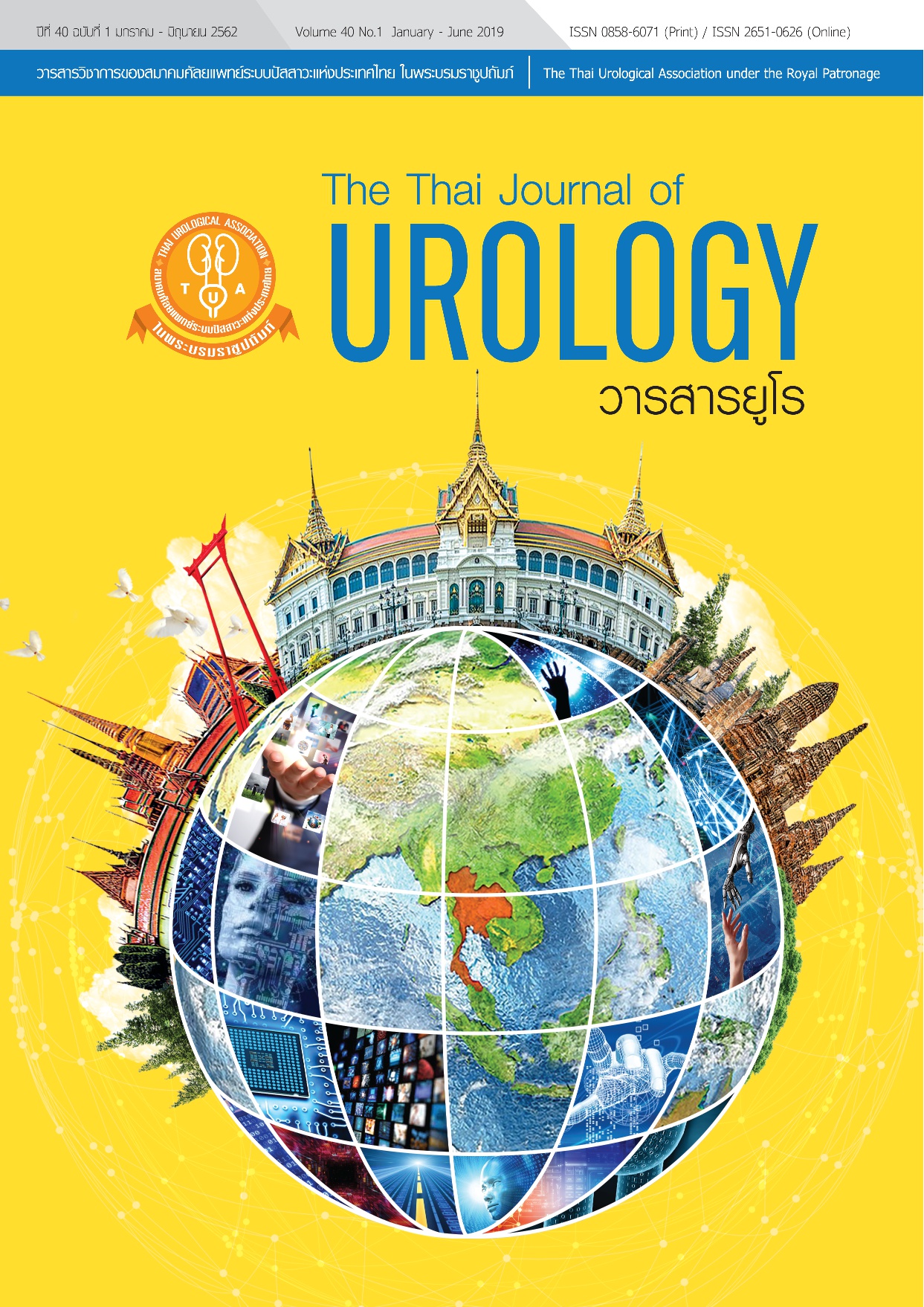Feeding tube or Foley catheter for urethral drainage in hypospadias repair: A randomized controlled trial
Keywords:
early complications, fistula, obstruction, bladder spasm, hematuriaAbstract
Objective: To compare the early complications occurring between indwelling use of a feeding tube and Foley catheter for urethral drainage after hypospadias repair.
Material and Method: Sixty boys with proximal or distal hypospadias were included in this prospective study. The patients were randomly divided into 2 groups. In group I a feeding tube was used as a urethral stent and in group II a Foley catheter was used. All patients underwent hypospadias repair by the same surgeon using the bilateral external skin tube (BEST) technique. The patients were followed up at 1-month after surgery for clinical evaluation.
Result: There were no statistically significant differences between group I and group II in catheter obstruction, kinking, dislodgment, bladder spasm, hematuria, urinary tract infection, and pain score. At the 1-month follow-up, there were no statistically significant differences between the groups in urethrocutaneous fistula, glans dehiscence, repair breakdown, flap necrosis, hematoma, and wound infection. Five patients in group I (16%) and 1 patient (3%) in group II had catheter dislodgment (p=0.19). Seven patients in group I (23%) and 3 patients (10%) in group II had bladder spasm (p=0.30).
Conclusion: The use of a Foley catheter appears to lead to lower bladder spasm and catheter dislodgment rates than the use of a feeding tube. A larger sample size is required for a future randomized controlled study in order to add weight to these findings.
References
2. Chen C, Gong C, Zhang W. Effects of oral testosterone undecanoate treatment for severe hypospadias. Int Urol Nephrol 2015;47:875-80.
3. Hollowell JG, Keating MA, Snyder HM, Duckett JW. Preservation of the urethral plate in hypospadias repair: extended applications and further experience with the onlay island flap urethroplasty. J Urol 1990;143:98–100.
4. Demirbilek S, Kanmaz T, Aydin G, Yucesan S. Outcomes of one-stage techniques for proximal hypospadias repair. Urology 2001;58:267-70.
5. Emir L, Germiyanoglu C, Erol D. Onlay island flap urethroplasty: a comparative analysis of primary versus reoperative cases. Urology 2003;61:216-9.
6. Mahawong P. Hypospadias reoperation. Thai J Urol 2012;33:98-113.
7. Gupta A, Gupta R, Srivastav P, Gupta A. Comparison of interrupted- and continuous-suture urethroplasty in tubularised incised-plate hypospadias repair: a prospective study. Arab J Urol 2017;15:312-8.
8. Bernie JE, Alagiri M. Tubeless Barcat: a patient-friendly hypospadias procedure. Urology 2003;61:1230-2.
9. Aslan AR, Yucebas E, Tekin A. Short-term catheterization after TIP repair in distal hypospadias: who are the best candidates? Pediatr Sure Int 2007;23:265-9.
10. El-Sherbiny MT. Tubularized incised plate repair of distal hypospadias in toilet-trained children: should a stent be left? BJU Int 2003;92:1003-5.
11. Sujijantararat P. Intravesical knotting of a feeding tube used as a urinary catheter. J Med Assoc Thai 2007;90:1231-3.
12. Hardwicke J, Jones E, Wilson-Jones N. Optimization of silicone urinary catheters for hypospadias repair. J Pediatr Urol 2010;6:385-8.
13. Macedo A, Rondon A, Ortiz V. Hypospadias. Curr Opin Urol 2012;22:447-52.
14. Buson H, Smiley D, Reinberg Y, Gonzalez R. Distal hypospadias repair without stents: is it better? J Urol 1994;151:1059-60.
15. Minevich E, Pecha BR, Wacksman J, Sheldon CA. Mathieu hypospadias repair: experience in 202 patients. J Urol 1999;162: 2141-2.
16. Demirbilek S.Atayurt HF. One stage hypospadias repair with stent or suprapubic diversion: which is better? J Pediatr Surg 1997;32:1711-2.
17. Saleh AM, Wesam A. Amr A, Salah M. Urinary drainage after hypospadias repair: Urethral stent or bladder catheter. Ann Pediatr Surg 2009;5:101-3.



